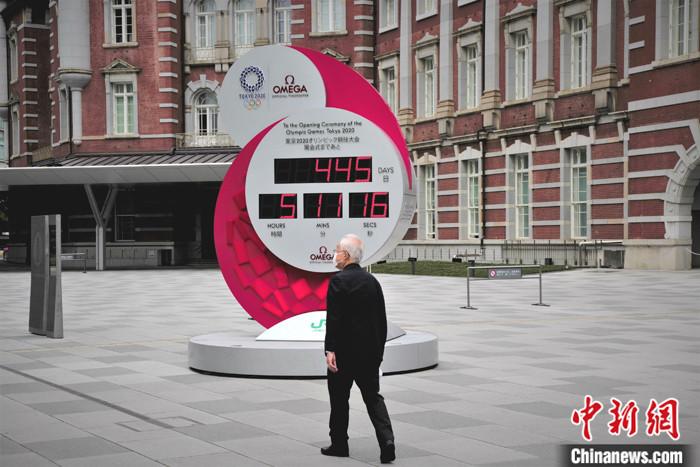China News Service, May 21, according to Kyodo News, a Japanese government source revealed on the 20th that regarding the eight prefectures that are still implementing the emergency declaration, the government plans to lay in Osaka, Kyoto and Bing in the three prefectures of Kinki The library is released. These prefectures and counties have reached the standard in terms of the number of newly infected people. Prime Minister Shinzo Abe will listen to the opinions of the government advisory committee on the 21st and will make a comprehensive judgment.
On May 4, local time, pedestrians walked past the Olympic countdown electronic screen near Tokyo Station in Japan. China News Agency reporter Lu Shaowei
The four prefectures of Tokyo, Kanagawa, Saitama, and Chiba, and Hokkaido, will not be released for the time being, and it is planned to observe the situation again around the middle of next week.
At the press conference on the 20th, Japanese director of economic regeneration, Nishimura Kangmin emphasized: "It is more appropriate to judge from the perspective of economy and life circle as one." After the declaration of the three prefectures in Kinki, it will strive to gradually restart economic and social activities. For Hokkaido and the metropolitan area, the government continues to demand that people avoid going out. However, some people pointed out that after the long holiday in early May, all of Japan has been relaxed, the number of people going out has increased, and there have also been concerns that the number of newly infected people will increase in late May.
The three criteria for the dissolution declaration are infection status, medical care provision system and testing system. Shigeru Omi, chairman of the Japan Advisory Council, said that judgments will be made on the basis of three standards. In terms of infection status, "the total number of newly infected people in the past week is less than 0.5 per 100,000 population" as a general standard.
In the week ended 19th, Hokkaido, Tokyo and Kanagawa exceeded 0.5 people. A source at the prime minister ’s residence said: “Tokyo is densely populated, and infections may expand rapidly, and will be carefully considered.” Government officials said “For Tokyo, I hope to see more changes in the number of new infections for some time.”
For Saitama and Chiba, who meet the criteria of 0.5 or less, senior government officials pointed out that "there are many people in the two prefectures who go to work in Tokyo, which is difficult to cut." In addition, the National Council of Governors has considered the requirement of the four metropolitan prefectures in the capital.
On May 14, the Japanese government canceled the emergency state in 39 prefectures, and 8 prefectures including Tokyo and Osaka are still in emergency.

